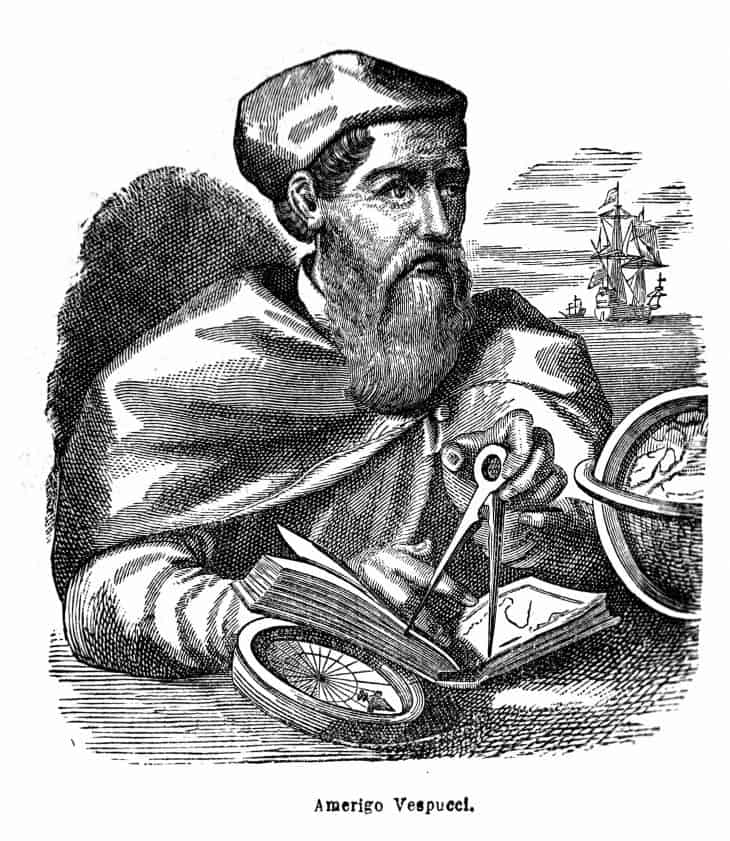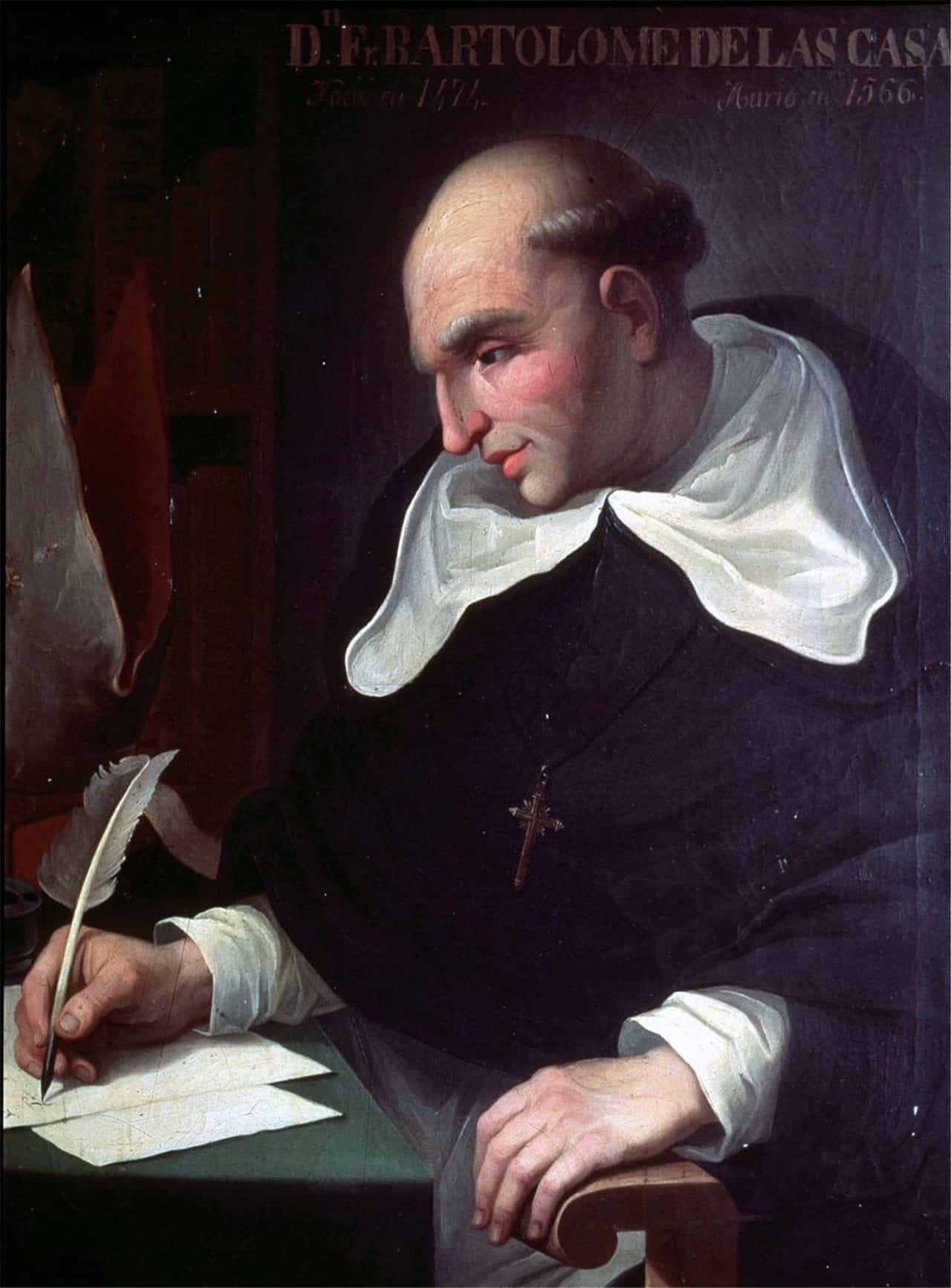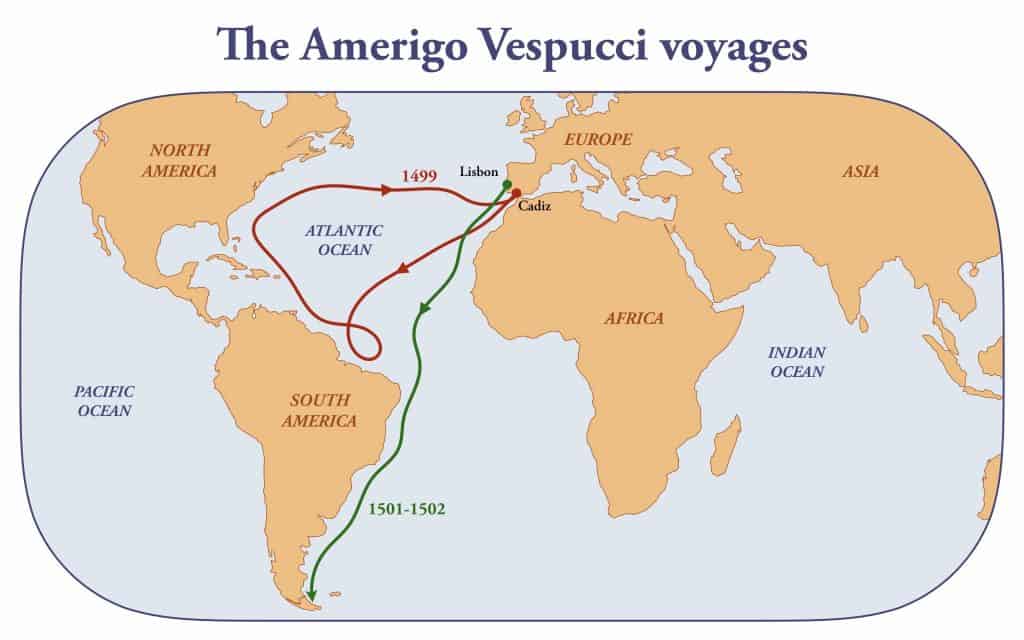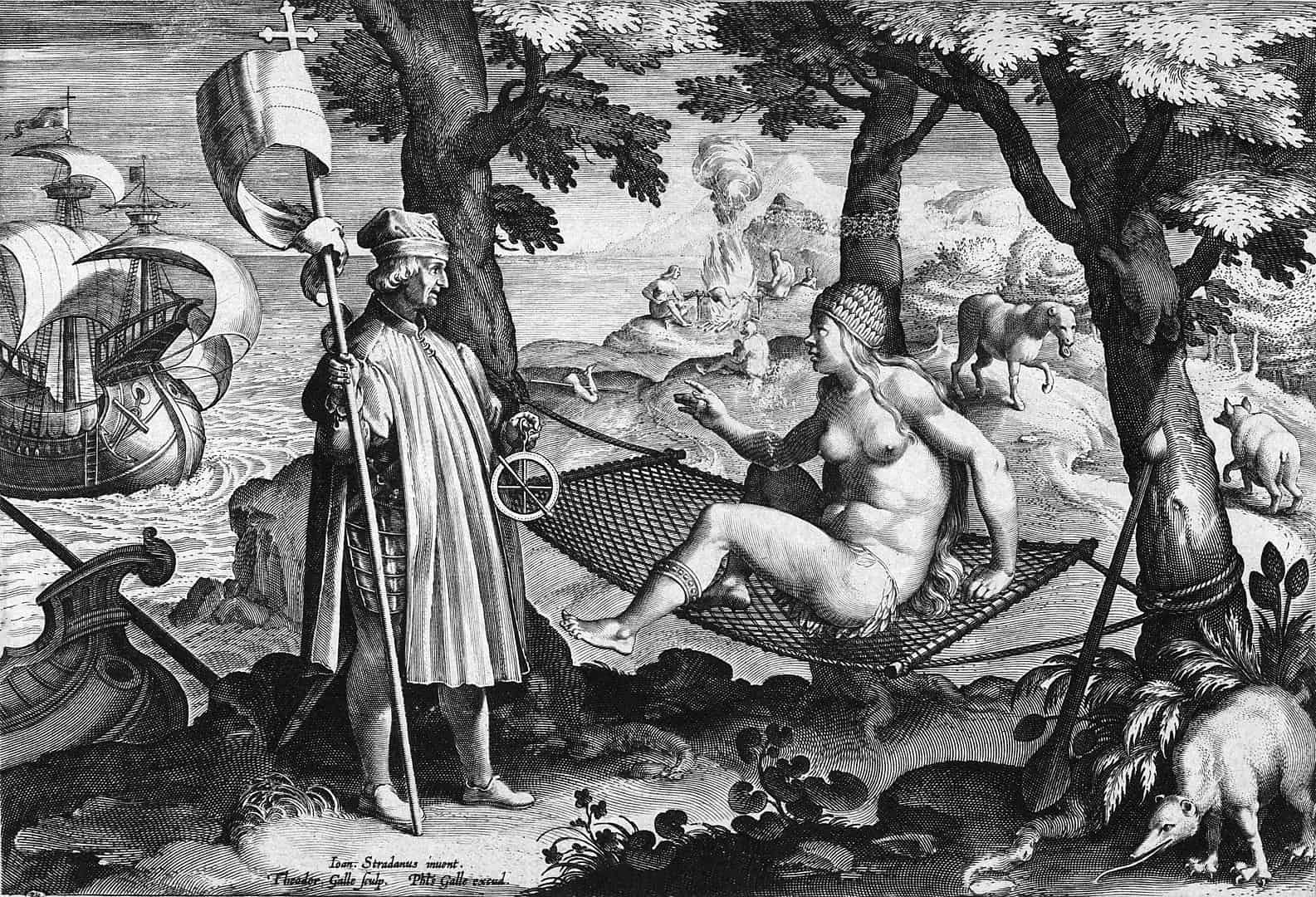
Christopher Columbus discovered the New World, and later shared his name with Colombia and Columbia. But Columbus only reached a few islands in the Caribbean, while Vespucci actually reached the American mainland. In 1499, he became the first European to reach the Northern part of South America, a year before Columbus, who until then had only visited islands. Out of all the Amerigo Vespucci facts you’ll find, this is one not a lot of people know about. But it is absolutely true!
Amerigo accomplished other great things, too. On March 22, 1508, King Ferdinand of Spain gave him the job of Pilot Major, or chief navigator of Spain. As the pilot major, Amerigo set up a navigation school where he standardized and taught navigation techniques. He did this until his death in 1512.
Amerigo is regarded by many to be a pioneer of Atlantic exploration, particularly because his travel literature regarding the New World was instrumental in furthering geographic discovery. Numerous explorers benefited from the numerous things Amerigo discovered. Let us learn more about the man who shares his name with the New World with these 40 Amerigo Vespucci facts.
- Historians don’t actually know how many trips Vespucci made to the Americas.
- Vespucci raided the Bahamas at least once for slaves and returned to Spain with 232 captives.
- The Spanish Crown paid Vespucci 50,000 maravedis, equivalent to $200,000 today, every year for his services.
- He also received an additional 25,000 maravedis for business expenses.
- After his death, his wife received an annual pension of 10,000 maravedis in his honor.
- Vespucci originally came from the city of Florence in Italy.
- In his youth, he received a Renaissance education in various fields including astronomy, geography, Latin, literature, rhetoric, and philosophy.
- Vespucci spent time in the Court of King Louis XI of France.
- Vespucci later moved to Spain in 1492, for reasons still unclear to historians.
- He made his first voyage to the Americas in 1497.
- Amerigo made his last voyage to the Americas in 1505.
- King Ferdinand II of Spain made him a Spanish citizen on his return from the Americas.
- Vespucci then took on the responsibility of training Spanish ship pilots.
- He also had the responsibility of granting licenses for anyone sailing to the Americas.
- Vespucci died on February 22, 1512, leaving his properties to his wife and nephew.
- Vespucci’s family wasn’t rich, but they had connections with the powerful Medici family of Florence.
- Amerigo shared his name with his grandfather, who served as Chancellor of the Republic of Florence.
- His older brother Girolamo also joined the Knights Templar.
- In his youth, Amerigo Vespucci worked as a business manager for the Medici family.
- He later married Maria Cerezo, the daughter of Spain’s Grand Captain, Gonzalo de Córdoba.
Vespucci gave his name to the Americas.
Well, he didn’t actually name it after himself, but he did become the first person to call the Western Hemisphere, the New World. Matthias Ringmann and Martin Waldseemuller first used Amerigo Vespucci’s name as that of the New World’s in 1507.
They did on the basis that Vespucci’s published letters about his voyages to the New World had confirmed it as the Antipodes theorized to exist since Greco-Roman times. As such, Ringmann and Waldseemuller thought it only fitting that Vespucci’s name would go down in history as that of the New World. The trend stuck, eventually becoming permanent in the 1530s, with famous mapmaker Gerardus Mercator marking the New World as North and South America on his maps.
In his youth, Vespucci traveled all over Europe.
Like we mentioned earlier, he once spent time at the Court of King Louis XI of France. He did so as part of his cousin Guido Vespucci’s staff, with Guido leading a diplomatic mission to gain French support for Florence against Naples. Amerigo Vespucci’s role in his cousin’s staff remains unclear to historians, but evidence exists pointing to him serving as a secretary for his cousin. Along the way, they passed through the Italian cities of Bologna and Milan, and the French city of Lyons. Despite Guido’s best efforts, though, they returned to Florence in 1481 having failed in their mission.
Vespucci had a connection to Columbus’ voyages to the New World.
At the time, he worked for the Florentine merchant Gianotto Berardi, whose business involved the African slave trade as well as supplying and equipping ships. Berardi invested an estimated 500,000 maravedis in Columbus’ expeditions, equivalent to around $4 million today. Berardi died in 1495, with Vespucci as the designated executor for his will.
Vespucci later carried on Berardi’s business supplying and equipping ships headed to and from the West Indies, as Columbus called his discoveries. However, profits proved far less than what Columbus promised, with Vespucci at one point owing 140,000 maravedis, or $560,000 today, to creditors.
Early modern historians questioned the authenticity of Vespucci’s claims.
This primarily came from the fact that all proof of his claimed part in expeditions to the New World comes from 4 letters published between 1500 and 1505. The explorer Sebastian Cabot in 1515 publicly doubted Vespucci even traveled overseas, at all. Later on, during the 16th century, the Dominican friar and scholar Bartolomé de las Casas also called Vespucci a liar who had stolen the honor due to Columbus. This trend continued over the following centuries and peaked in 1856. In that year, the American writer Ralph Emerson again called Vespucci a liar who had tricked the world into giving his name to two continents.

Vespucci may have exaggerated his role in his early expeditions to the Americas.
In particular, historians focus on how Vespucci claimed to have a leading role in his expeditions from 1497 to 1498. He also made a similar claim during his expedition from 1499 to 1500. Given Vespucci’s lack of experience in long-distance travel by sea at the time, historians think it very unlikely he had a leading role in the expeditions. Instead, they argue that in both trips he merely served as the official representative for the expeditions’ investors. That said, the commander of the 1499 Expedition, Alonso de Ojeda, did record in his journals that Vespucci served as a pilot for his ship while at sea.

Vespucci held a place in Goncalo Coelho’s 1501 Expedition to the Americas.
King Manuel I of Portugal commissioned the expedition to resolve the question of claims as per the Treaty of Tordesillas. The treaty had divided discoveries between Spain and Portugal according to a line set by Pope Julius II as 2000 km west of the Cape Verde Islands. Any discoveries east of the line would belong to Portugal, while those west of the line would belong to Spain.
Vespucci served as both a pilot and navigator for the expedition, which explored the east coast of modern Brazil. This expedition would see them discover where Rio de Janeiro now stands. They also had an encounter where natives attacked and ate one of their crew.
Inconsistencies do exist in Vespucci’s letters.
Aside from his exaggerated role which we’ve mentioned, Vespucci’s records of astronomical observations and long distances traveled get confusingly contradictory at times. For example, he once recorded traveling a distance of nearly 5000 kilometers northwest of Honduras during the 1497 Expedition. However, they couldn’t have traveled that distance, as it would have taken them straight through Mexico and into the Pacific Ocean.
He also made another inconsistency during the 1501 Expedition, too. Specifically, he claimed they turned back to Europe after reaching the latitude 32 degrees south. However, cross-referencing other sources on the expedition actually places them turning back around 25 degrees south.
Modern historians still argue over the authenticity of Vespucci’s claims.
Most agree that Vespucci definitely took part in the 1499 and 1501 Expeditions, thanks to testimony from other sources. However, his membership in the 1497 and the 1503 Expeditions remains in question. The 1503 Expedition especially stands out, as no other sources apart from Vespucci testify to his membership in the expedition. This has led some modern historians to agree that Vespucci may not actually have written the letters as published. Instead, the published versions, while based on letters that Vespucci actually wrote, had gone through editing and exaggerations during publishing.
Vespucci’s writings popularized the concept of the New World in Europe.
Whether or not he really did do everything his letters claim he did, historians generally agree that Vespucci had a major role in the Age of Exploration. Columbus might have led the way, but it took Vespucci to capture the imagination of Europe about the New World.

Vespucci’s wife held a great deal of influence with her husband.
For one thing, her connection as the daughter of Gonzalo de Córdoba gave Vespucci a great deal of influence to work with in Spain. She also actively took part in her husband’s business, so much so that he trusted her with the power of attorney, while he went on his overseas expeditions.
Was this page helpful?
Our commitment to delivering trustworthy and engaging content is at the heart of what we do. Each fact on our site is contributed by real users like you, bringing a wealth of diverse insights and information. To ensure the highest standards of accuracy and reliability, our dedicated editors meticulously review each submission. This process guarantees that the facts we share are not only fascinating but also credible. Trust in our commitment to quality and authenticity as you explore and learn with us.
